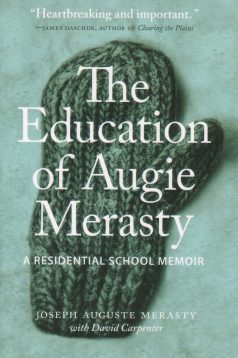The Education Of Augie Merasty is an odd and absorbing memoir. The subject and his writer met only twice. Many details are unverified. There is no beginning, middle or end. Yet the book documents a dark corner of our nature that psychologists call “social proof.”
Imagine you are walking on a desolate beach and spot a lone swimmer in distress. Would you call out? Of course you would. You are a good person. Now imagine you are among hundreds on a very crowded beach and spot the same sudden drowning. Then what? Here no answer is required. Canadians drown at crowded beaches every summer.
This is “social proof,” a type of group think where individuals seek cues from those around them on how to react to upsetting developments. “Very often an emergency is not obviously an emergency,” psychologist Robert Cialdini of Arizona State University wrote in a 1984 bestseller Influence: The Psychology Of Persuasion. “In times of such uncertainty, the natural tendency is to look around at the actions of others for clues. We can learn, from the way other witnesses are reacting, whether or not the event is an emergency.”
The phenomenon is most damning in hierarchies where individual heroics are professionally risky. Why did no regulator at Transport Canada warn that a short line railway running oil tank cars through Lac-Mégantic was in breach of safety regulations? Why did no Ford Motor Co. engineer warn the 1971 Pinto was prone to gas tank explosions?
Augie Merasty reveals all.
Merasty was a Saskatchewan Cree who from age five attended St. Therese Residential School in Sturgeon Landing, Sask. He remained til he was 14. Merasty recounted his childhood in letters and telephone conversations with David Carpenter, former professor of English at the University of Saskatchewan. The two met once, in a bar, and years afterward at a detox centre. Carpenter acknowledges he was unable to verify all of Merasty’s anecdotes. The two often fell out of contact as the old man drifted into alcoholism and homelessness.
Yet Merasty in his infrequent letters had “immaculate handwriting,” proof of a Residential School upbringing, and his stories had a ring of authenticity. “I’m not much interested in writing a tirade against the Roman Catholic Church,” Carpenter notes. “As far as I have been able to discover, similar patterns of abuse have been uncovered relative to Canadian residential schools run by other churches.”
Merasty recounts teachers who were loved by their students. One kind priest worked as a blacksmith and was kicked by a horse. “We all prayed for him,” Merasty said. Another priest is recalled as “immaculately dressed,” a third was jolly and liked to laugh. Brother Henri is remembered as a stammerer and a “great guy”: “He would roar, ‘All right, you bastards, g-g-g-g-get out, all of you!’ Otherwise he was a very loving and kindly old soul when nobody bothered him.”
And there were others: A nun who made a pass at Merasty when he was 14 then begged him to keep quiet, or the school cobbler who molested boys in the workshop, or Brother Lepeigne who preyed on 8-year olds. “Even now I wonder, why wasn’t the bishop’s house ever told about those things?” Merasty says. “But as things were at that time, priests, nuns, brothers belonging to the order of the oblates of the Mary Immaculate were considered by all Catholics to be infallible and they were respected with unshakeable reverence, especially by my parents.”
Of course there were witnesses who knew what was happening. Merasty recounts their stories, too: the devout nun who told a predator priest, “You will never see the kingdom of heaven unless you give your life and soul to God and repent for your sins,” or the teacher who actually wept when the boys were disciplined. “She never changed in her loving and kindly ways and I’m sure she still is that way,” Merasty says. “I met her ten years ago in Nipawin, Sask. and she kissed me hard, bless her.”
The Vatican estimates 1 in 50 priests were child abusers, about 4,420 clerics, according to a 2014 interview with Pope Francis by the Italian daily La Republicca. This estimate is considered low. The U.S. Conference of Bishops counted 6,427 plausible cases in the period from 1950 to 2013.
Thousands more knew and did nothing. “Like Augie,” writes his biographer Carpenter, “I have been pondering the institutionalized strategies of silence that protected these ghouls and allowed them to pursue their violent recreations for so many years.”
The Education Of Augie Merasty: A Residential School Memoir, by Joseph A. Merasty with David Carpenter; University of Regina Press; 105 pages; ISBN 9780-8897-73684; $21.95






